


TIME FOR BED
The science of light and sleep
AIMING FOR THE STARS
Restoring India's night sky
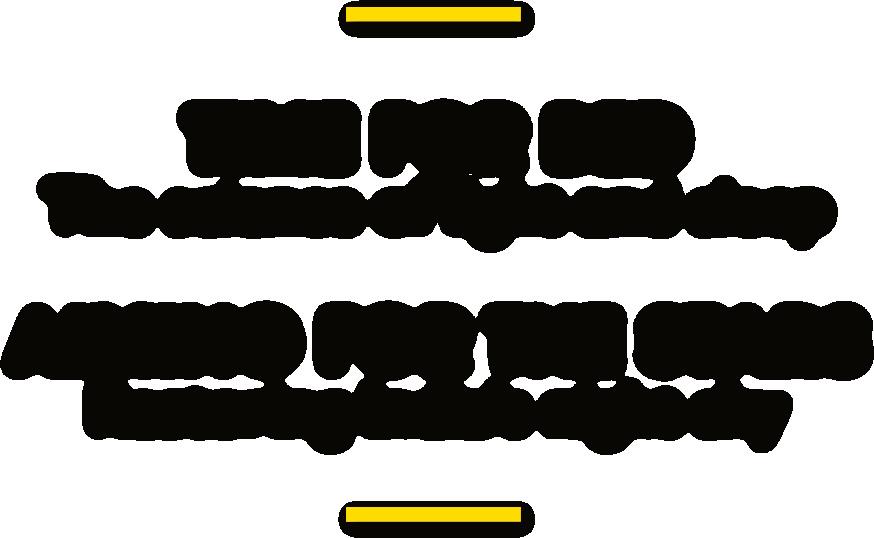
VOLUME 17 ISSUE 3 MAY/JUNE 2024 The Society of Light and Lighting
SECRETARY
Brendan Keely FSLL bkeely@cibse.org
EDITOR
Jill Entwistle jillentwistle@yahoo.com
COMMUNICATIONS
COMMITTEE:
Andrew Bissell FSLL
James Buck
Iain Carlile FSLL
Jill Entwistle
Fiona Fanning
Debbie-Sue Farrell
Chris Fordham MSLL
Rebecca Hodge
Stewart Langdown FSLL
Luke Locke-Wheaton
Rory Marples MSLL
Linda Salamoun MSLL
All contributions are the responsibility of the author, and do not necessarily reflect the views of the society. All contributions are personal, except where attributed to an organisation represented by the author.
COPY DATE FOR LL4 2024
IS 15 MAY
PUBLISHED BY
The Society of Light and Lighting
222 Balham High Road London SW12 9BS
www.sll.org.uk
ISSN 2632-2838
© 2024 THE SOCIETY OF LIGHT AND LIGHTING
The Society of Light and Lighting is part of the Chartered Institution of Building Services Engineers, 222 Balham High Road, London SW12 9BS. Charity registration no 278104
Designed and printed in the UK
George Eason
Graphic Design
www.georgeeason.design
hello@georgeeason.design
FROM THE EDITOR
There was a TV series some time ago which explored various innovations and structures devised by humankind, all apparently leaving us scratching our heads, baffled by how they did it.
It was a chastening metaphor of humanity's so-called progress. Homo sapiens is smart but assumes the path is ever upwards and onwards, without a backward glance or regard for past lessons learned.
So here we are, on a small scale at the edge of a quarry because the satnav told us it was the optimum route, and on a large scale at the cliff edge of an uncertain future.
Harvard professor Edward O Wilson, evolutionary biologist, biological diversity pioneer and 'father of sociobiology', put it rather pithily: 'The real problem of humanity is... we have Paleolithic emotions, medieval institutions and godlike technology.'
We could start with understanding our own biology and the effect (damage?) our high-tech, 24-hour consumer society is having on us in the
most fundamental sense. Sleep is a basic need, for instance, occupying more than a third of our existence but our excessively lit environment and devices militate against it. According to sleep specialist Nicholas Winton (The Rest is Science, p5), just 10 per cent of society claim to sleep well.
And there are the known unknowns. We have yet to appreciate the effect of non-visible, nearinfrared (NIR) and UV wavelengths of daylight on circadian and performance outcomes.
Wilson was equally succinct in his response to a questioner who asked if humanity would be able to solve the crises of the next 100 years. 'Yes,' he replied, 'if we are honest and smart.'

CURRENT SLL LIGHTING GUIDES
SLL Lighting Guide 0: Introduction to Light and Lighting (2017)
SLL Lighting Guide 1: The Industrial Environment (2018)
SLL Lighting Guide 2: Lighting for Healthcare Premises (2019)
SLL Lighting Guide 4: Sports Lighting (2023)
SLL Lighting Guide 5: Lighting for Education (2011)
SLL Lighting Guide 6: The Exterior Environment (2016)
SLL Lighting Guide 7: Office Lighting (2023)
JILL ENTWISTLE
JILLENTWISTLE @YAHOO.COM
SLL Lighting Guide 8: Lighting for Museums and Galleries (2021)
SLL Lighting Guide 9: Lighting for Communal Residential Buildings (2022)
SLL Lighting Guide 10: Daylighting – a guide for designers (2014)
SLL Lighting Guide 11: Surface Reflectance and Colour (2001)
SLL Lighting Guide 12: Emergency Lighting (2022)
SLL Lighting Guide 13: Places of Worship (2018)
SLL Lighting Guide 14: Control of Electric Lighting (2023)
SLL Lighting Guide 15: Transport Buildings (2017)
SLL Lighting Guide 16: Lighting for Stairs (2017)
SLL Lighting Guide 17: Lighting for Retail Premises (2018)
SLL Lighting Guide 18: Lighting for Licensed Premises (2018)
SLL Lighting Guide 19: Lighting for Extreme Conditions (2019)
SLL Lighting Guide 20: Lighting and Facilities Management (2020)
SLL Lighting Guide 21: Protecting the Night-time Environment (2021)
SLL Lighting Guide 22: Lighting for Control Rooms (2022)
Guide to Limiting Obtrusive Light (2012)
Code for Lighting (2022)
Commissioning Code L (2018)
SLL Lighting Handbook (2018)
CIBSE TM66: Creating a Circular Economy in the Lighting Industry (2021)
CIBSE TM65.2: Embodied Carbon in Building Services – Lighting (2023)
Editorial May/June 2024 2 sll.org.uk
FROM THE SECRETARY
We hope that many of you will join us at the 2024 SLL AGM, Awards and Presidential Address on the evening of 14May. The event will take place in the Tiled Hall at Leeds Art Gallery and online. We will be thanking outgoing president Helen Loomes for her work and input over the previous 12 months, and welcoming the incoming president, Dan Lister.
The AGM will only last around 20 minutes and we will then present the awards acknowledging those who have given so much to the society, the lighting industry and public. Awards include the Regional Lighting Award, Lighting Award, President’s Medal and Honorary Fellowship. In addition, there will be two awards for the best papers from Lighting Research and Technology Journal in 2023, the Leon Gaster and WalshWeston awards, and we will be provided with an overview of the award winners' research during the ceremony. The event is free to attend and all are welcome to join us at the venue or online.
We are working with our CIBSE colleagues to deliver three SLL webinars in May, made available through the CIBSE #GrowYourKnowledge series. The webinars will focus on recently launched SLL publications and the provisional dates, publications and speakers are:
8 May LG7: Offices, Sophie Parry
15 May LG14: Control of Electric Lighting, Sophie Parry
22 May LG4: Sports Lighting, Mike Simpson
We are creating a new group within SLL dedicated to those in the early stages of their careers. The group will be known as the SLL Early Career Community (SLL ECC). If you have been working in lighting for less than 10 years we’d be delighted to hear from you (see box).
• Registration for the 2024 SLL AGM, Awards and Presidential Address: www.cibse.org/what-s-on/ search-events/sll-agmawards-presidentialaddress-2024
• More information and expression of interest form for the SLL Early Career Community (SLL ECC): www.cibse.org/newsSLLECC
• To apply for the Jean Heap Bursary: www.cibse.org/get-involved/ societies/society-of-lightand-lighting-sll/education/ the-jean-heap-bursary
most experienced professionals in research, industry and practice.'
The Young Lighter 24 Stage 1 deadline has just passed. Good luck to all who entered the competition, your entries are now with the judging panel. It is hoped that the competition shortlist will be announced on Monday 20 May when we will know who will be going through to Stage 2 of the competition. Those shortlisted will then have an opportunity to expand on their ideas with a three-five minute presentation to camera.
There is still time to get your Jean Heap Bursary application in. The application deadline is Friday 17May and the bursary funding is up to £4000. We hope to have the final report from Simone Bonavia, the 2023 recipient of the bursary, available online soon and we will notify you when this can be accessed.
And finally, save the following date: Ready Steady Light 24, in association with Rose Bruford College and the IALD, will take place on Tuesday 15 October. The event registration will be available soon.
THE REST IS SCIENCE
BasedonarecentSLLseminar, NicholasWittonlooksatthe relationshipbetweenlightandsleep
SHOW OF CONFIDENCE
ChrisDicksgivesaspecifier'sviewof thisyear'srecentLight+Building exhibitioninFrankfurt
DARK SKY THINKING
NeethuSusanGeorgeoutlinesthe missiontomitigatelightpollutioninIndia
THE CARBON-BASED LIGHT FORM
Anewlyupdatedreportontheuse ofgrapheneinlightingassessesits currentpotential
CAUSE AND EFFECT
IainCarlileselectsafurtherthreeofthe paperspublishedintheearlycareer researcheditionofLR&T
EYE TO THE FUTURE
Top5:IainMacraeonfivethingsthatwill changelightingdesign
EVENTS
COVER: Detail of Artificial Humans installation by Atelier Haute Cuisine, featured at the Amsterdam Light Festival, which won a Darc Award in the Best Creative Lighting Event category
As Maria Engelzou, who has been instrumental in setting up the SLL ECC group, wrote in an article for Light Lines last year: 'This group creates a wide and international community connecting young lighting professionals to share ideas, participate in webinars, fill the knowledge gap between different generations and also to find ways to learn and benefit from the Janus van den Eijnden
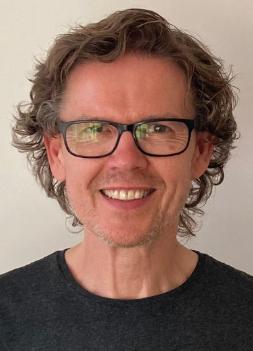

Secretary’s column/Contents May/June 2024 3 Twitter: @sll100 Contents 2 3 4 5 8 10 13 14 15 16 EDITORIAL SECRETARY'S COLUMN NEWS
BRENDAN KEELY BKEELY @CIBSE.ORG
News
MESSE FRANKFURT TAKES OVER US-BASED LIGHTFAIR
Messe Frankfurt is taking over the US-based LightFair, which will now be part of the Light + Building portfolio. Held alternately in Las Vegas and New York, the five-day trade fair has an accompanying conference for the International Association of Lighting Designers (IALD) and now the Illuminating Engineering Society (IES), which will also be organised by Messe Frankfurt. Lightfair 2024 was cancelled as it moved from an annual to a biennial event.
With more than 500 exhibiting companies, LightFair is the largest event for architectural and commercial lighting in North America. 'This new stage in LightFair’s development will open up new possibilities for reaching a larger audience,' said Christopher Knowlton, CEO of the IALD.
The partnership with LightFair brings Light + Building’s international network to a total of 13 events, including in Asia, South America and the Middle East, with its flagship fair in Frankfurt (see p8). LightFair 2025 will be held in Las Vegas between 4 and 8 May
NEW PODCAST EXPLORES CUTTING-EDGE CIRCADIAN RESEARCH
A new podcast will explore cutting-edge scientific research on theimpact of light onthecircadian clock. Light O’Clock is produced by the Translational Sensory and Circadian Neuroscience Unit of Munich's Max Planck Institute for Biological Cyberneticsand Technical University. Each 30-minute episode features a range of experts who explain how humans process light, how it can affect our health, and share their insight and advice on light exposure, including Prof Manuel Spitschan, Technical University of Munich; Prof Robert Lucas, University of Manchester, and Dr Elise McGlashan, University of Melbourne. All episodes are on Spotify, Apple Podcasts and YouTube. www.tscnlab.org/podcast

ON THE LIGHTER SIDE…
The lava lamp, cheesy but mesmirising emblem of sixties psychedelia, turns out to be quite useful in data encryption. The secret lies in its random patterns: chaotic data is necessary for strong encryption and a computer must have a source of random data.
Cloudflare, a global cloud platform designed to ensure cyber security, has installed around 100 lava lamps in the lobby of its HQ and mounted a camera pointing at the array. The camera takes photos of the

lamps at regular intervals and sends the images to Cloudflare servers. Each image becomes a string of random numbers that the servers can use as a starting point for creating secure encryption keys.
LIGHTING WORLD MOURNS
JONATHAN HOWARD
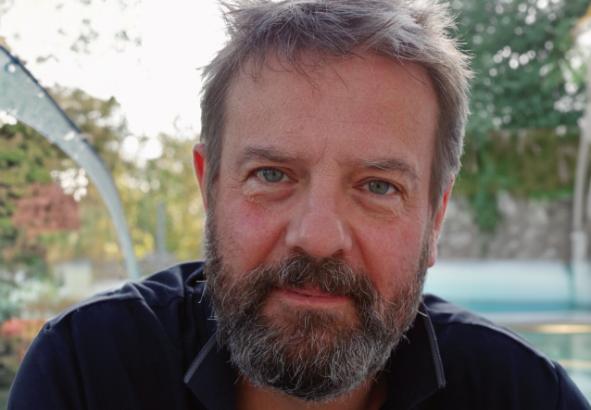
Tributes have poured in following the sudden death of Jonathan Howard Ratty, a director of lighting consultant DHA Designs.
'We have received an incredible number of messages of condolence and support,' said his co-directors Peter Fordham, David Robertson and Des O'Donovan.'There have been so many truly kind words said about this wonderful individual.He was held in such high regard within our industry, and across the museum and sectors that he worked.'
Jonathan Howard joined DHA in 1994, having worked initially as a theatrical lighting designer. He won the Arts' Council bursary for lighting design in 1989 and was resident lighting designer at the Royal School of Speech and Drama. In 1990 he joined the lighting design studio at Imagination.
He had a degree in drama and theatre studies from Royal Holloway College, University of London, and a master's degree in light and lighting from the Bartlett School, UCL.
His experience ranged widely from televised shows from the Albert Hall to the design of lighting systems for individual diamonds at DeBeers. In more recent years he specialised in consultancy for conservation-grade lighting at most of the major London museums.
CLARIFICATION
Apologies to Neethu Susan George, the new technical secretary for the SLL’s technical and publications committee. When announcing her appointment (May/June), we referred to her as a former specification manager and wellness advocate at Lamp Worktitude for Light (Spain). She still holds that position.
News May/June 2024 4 sll.org.uk
THE LATEST NEWS AND STORIES
THE REST IS SCIENCE
InthefirstoftwoarticlesbasedonarecentSLLseminar, NicholasWittonlooksattherelationshipbetweenlight andsleep,andoutlinesongoingresearchatUCL
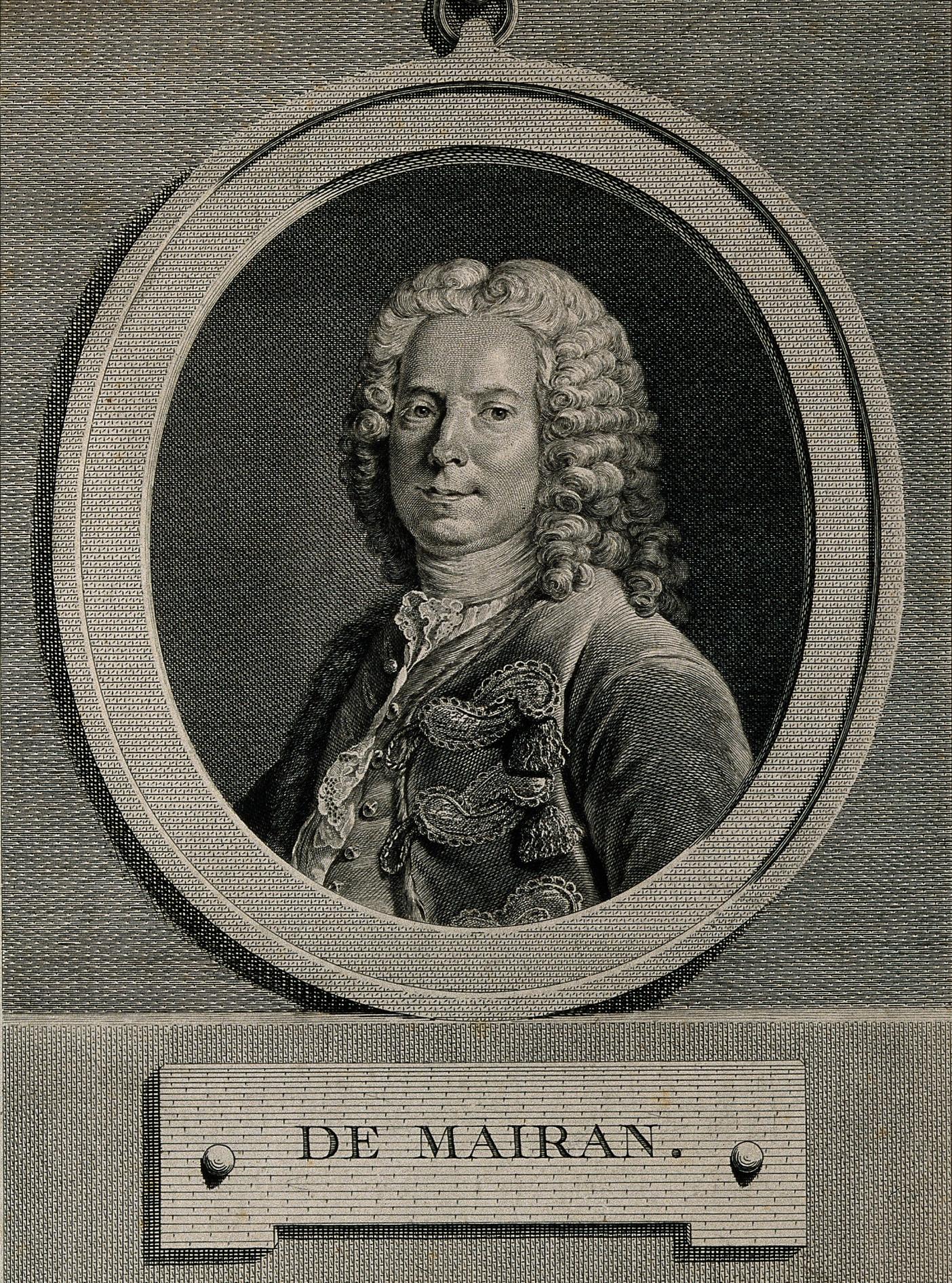
The first recorded scientific observations of circadian rhythms were made in 1729 by the French astronomer Jean Jacques d'Ortous de Mairan, who noted his mimosa plant continued to unfold its leaves in the morning and close them at night, in a fully darkened room.
The continuing identification of circadian clocks within living organisms showed that as well as responding to external stimuli, these internal processes anticipate the expected rhythmic changes in the environment, enabling our cells to keep time with one another and synchronise their activities. Over the centuries, research on the processes that originate within living organisms as they respond to their environment led to the eventual identification of the molecular mechanisms which control circadian rhythms.
In 1984, Michael Young at Rockefeller University, and Jeffery C Hall and Michael Rosbash at Brandeis University identified the period (per) and later the timeless (tim) genes. Subsequently, Japanese American neurobiologist and geneticist Joseph Takahashi completed the circadian feedback loop by identifying the clock gene in 1994.
Historically, it was assumed that the eye only contained two types of light response cells: the rods, which provide black and white vision in low light conditions, and cones, which work in brighter light and enable us to see colour. However, research throughout the 1990s by Prof Russell Foster et al, and further research from chronobiologist Samar Hattar and colleagues, underlined that the eye is directly connected to the biological clock, as they identified an impact cell which is light sensitive known as the intrinsically photosensitive retinal ganglion cell (ipRGC).
It was observed that one out of every 100 ganglion cells is directly light sensitive and these cells project to a number of brain areas involved in non-image-forming vision. These landmark studies added to the understanding that light is the main cue the body clock uses to sync the internal biological changes to the external 24-hour cycle. This underpinned the understanding that light not only gives us vision and a sense of space, but also gives us a sense of time.
Today there is greater understanding of how the endogenous body clock
Circadian system May/June 2024 5 Twitter: @sll100
� French astronomer Jean Jacques d'Ortous de Mairan who made the first recorded scientific observations of circadian rhythms in 1729
synchronises to the light and dark cycle, and sets the timings for a number of biological processes to occur at different times of the 24-hour day. These include rhythms of body temperature, blood pressure and urine production, as hormones such as testosterone, cortisol and melatonin are released and inhibited at specific times of the day and night cycle.
These processes are modulated by the body’s master clock, in the suprachiasmatic nucleus (SCN), in the hypothalamus, making sure they do not happen within the body at the same time. The timing of these different biochemical reactions at different times of the day or night enables our internal organs to task switch and recuperate. Some of the processes are less efficient when we are awake, therefore a consolidated period when we are asleep is necessary to optimise our ability to function.
These biological processes consign a number of behaviours to different times of the 24-hour cycle, the most obvious one being sleep. The light-surpassed hormone melatonin is released in the evening by the pineal gland in response to a signal from the master clock. Melatonin is one of the key messengers the SCN uses to inform the rest of the body it is night-time, including those parts of the brain that regulate sleep. It is often used as a marker to find out what time the SCN thinks it is.
Over the course of our lives, it has been estimated that we will spend around 36 per cent of our time asleep. Comparing this to other daily activities such as eating (11 per cent) or working (16 per cent), shows that sleep is the behaviour that we will exhibit the most throughout our lifetimes and is therefore the most important.
Sleep in its simplest form is controlled by two processes. The first process is called homeostatic drive or our sleep pressure. This is where the longer we are awake the greater there is a need for sleep again. As soon as we wake up, the chemical adenosine begins to accumulate, building up the pressure to fall back to sleep.
Typically being awake for 16 hours will build up enough sleep pressure to provoke a sleep period of around eight hours. However, if we just had this one process, we would be awake and asleep at uncontrollable and


random times of the day and night, causing a number of physiological, behavioural and societal problems. Therefore a second sleep process is used to sync our internal timing to the day and night cycle of the outside world. This process is our circadian drive.
'The role of architecture and urban planning will be key in determining the light exposure and subsequent sleep behaviours of society as a whole'
⊳ The body clock synchronises to the light and dark cycle, setting timings for a number of biological processes to occur with hormones released and inhibited at various times over 24 hours
⊳ The daily rhythms of hormones and activity
Interestingly, recent research by Aarti Jagannath and colleagues at the University of Oxford identified an adenosine-based regulatory mechanism that allows sleep and circadian processes to interact for the optimisation of sleep/wake timings in mice. This research has shown that adenosine encodes sleep history and that this signal modulates circadian entrainment by light, demonstrating that light is not only fundamental in regulating the circadian drive, but also plays an important role in regulation of the homeostatic drive.
It is important to note that not all our clocks run on the same timing. Different
Circadian system May/June 2024 6 sll.org.uk
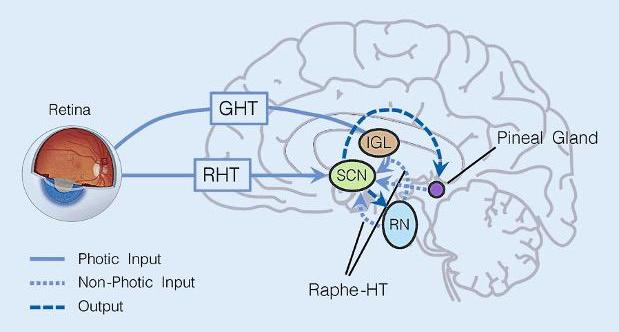
� Photic and non-photic input
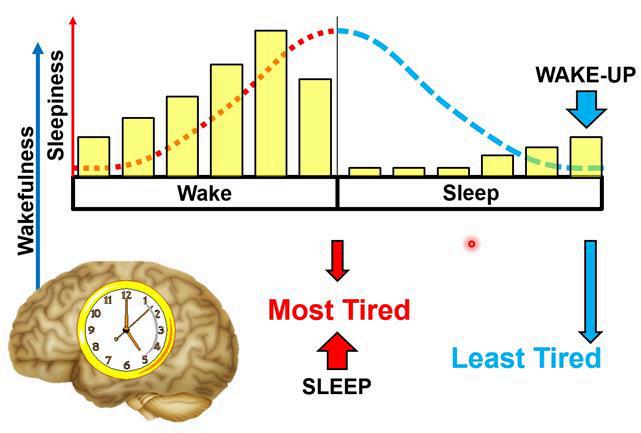
� The homeostatic and circadian drives
people’s clocks run at slightly different speeds, and here we see differences between people in core body temperature, melatonin onset and sleep timings.
A person’s clock is dependent on the length of an individual's period gene, which predetermines whether we are more of a morning person or an evening person. These chronotypes are known as ‘larks’ and ‘owls’, although 65 per cent of the population are middle types or ‘doves’.
Interestingly, a study on Amish people, who live in a world without electricity, has shown that 25 per cent are morning larks, compared to only 10-15 per cent of the rest of the population, showing the vital roles that daylight exposure and artificial light at night play in syncing our clocks to the outside environment.
Different chronotypes will run on different clocks and all have intrinsic periods that vary. Extreme chronotypes can vary between a circadian timing of 23.5 and 24.7 hours in length. While on a cellular level, individual cells are
autonomous and typically run in cycles at around 24.2 hours on average, meaning that they require constant readjustment to the light/dark cycle.
Despite the understanding we now have of the important role light plays in facilitating the sleep process, the invention of the light bulb has extended the working day to fit into any hour we choose and has consequently created a 24-hour society. However, it has become evident that our constantly lit society is affecting our sleeping habits more and more. Today, 37 per cent of people get by on five or six hours of sleep a night, whereas only 10 per cent of society claim to sleep well.
Research has shown that light pollution can have serious effects on sleep. A 2016 study found that people living in areas with greater light pollution went to bed and woke up later, were less satisfied with their sleep and were also generally more tired compared to those people who lived in areas with less light pollution.
In the workplace, Dr Mohamed Boubekri – specialist in the intersection of the built environment and human health – and colleagues found that increased light
exposure led to increased activity and longer sleep at weekends, while workers who were at a desk without windows reported poorer sleep quality, as well as more frequent sleep disturbances compared to people who work next to windows.
Additionally, Mariana Figueiro and colleagues at the Icahn School of Medicine at Mount Sinai found that individuals who received bright light during the day fell asleep more quickly, slept for an average of 20 minutes longer and had fewer sleep disturbances than those with access to lower light levels.
This research not only highlights the fundamental link between light and sleep but also the fact that further solutions are required to enable individuals to receive the right light at the right time. Therefore the role of architecture and urban planning will be crucial in determining the light exposure and subsequent sleep behaviours of society as a whole.
For these reasons my latest research at UCL will involve observing the effects of daylight and artificial light, specifically looking to ascertain the influence of non-visible, near-infrared (NIR) and ultraviolet wavelengths of daylight on circadian and performance outcomes.
Near-infrared light accounts for around 54 per cent of the solar radiation reaching the earth and is conjectured to play an essential role in sustaining life on our planet. Recent studies have shown there is potential for NIR to improve health and wellbeing through photobiomodulation. Research into the role NIR and UV plays in driving nonimage-forming responses that influence human physiology and behaviour is lacking. This study is designed to promote awareness of insufficient exposure to correct light, and produce standards for non-visible light exposures in workspaces, to be implemented by employers, urban designers, architects, and governance, for optimal health, wellbeing and performance of daytime workers.
'Research into the role near-infrared and UV plays in driving non-imageforming responses that influence human physiology and behaviour is lacking'
Nicholas Witton is a light, sleep and performance consultant and director at Elite Sleep. For more information, or to be a part of or sponsor the UCL research, please contact him at nicholas.witton@elite-sleep.co.uk
Circadian system May/June 2024 7 Twitter: @sll100
SHOW OF CONFIDENCE
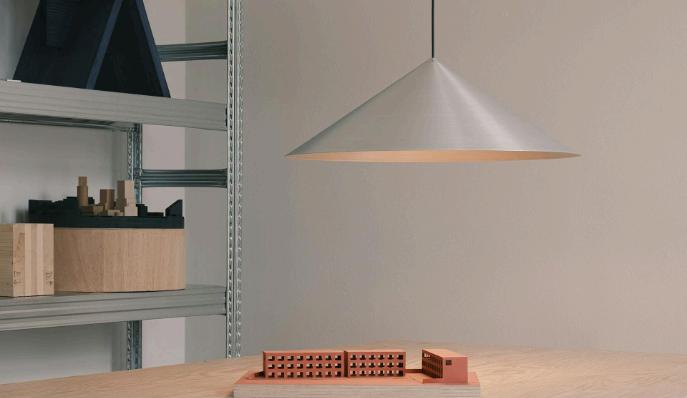
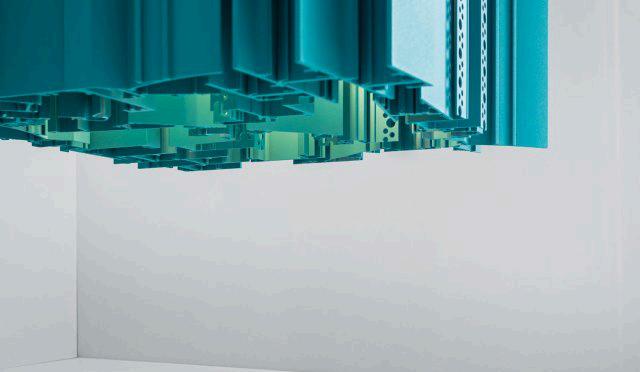
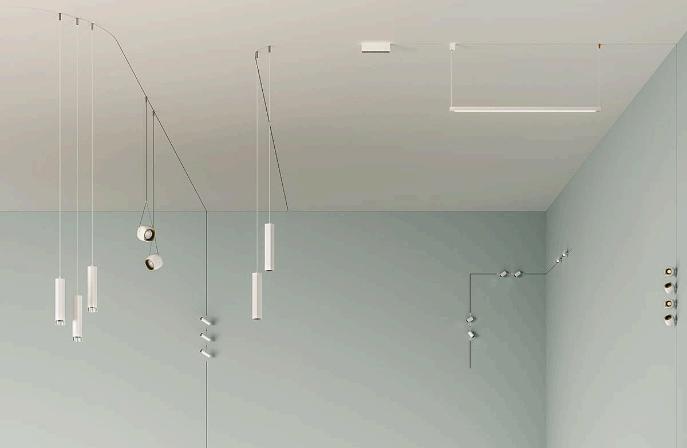
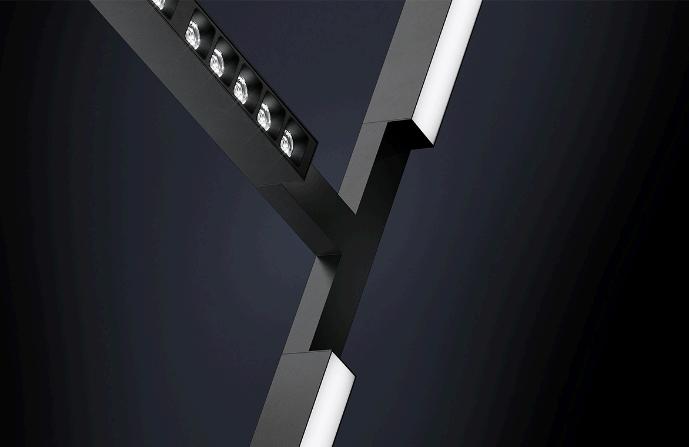

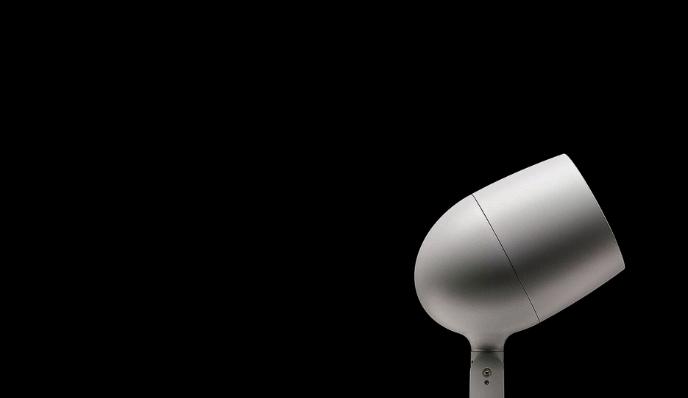
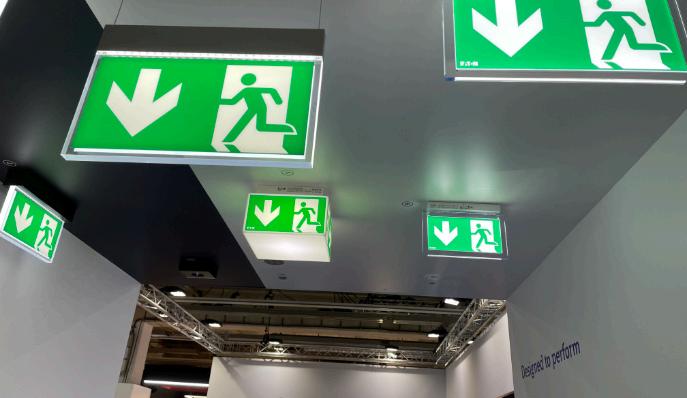
ChrisDicksgivesa specifier'sviewofthisyear's Light+Buildingexhibition inFrankfurt
Ifirst visited Light + Building in 2022, when Covid masks were still worn on the U-Bahn, and many predicted the demise of such events. 'We can do all this online now', and 'None of the big stands are here' were typical comments. Well, those which were there in 2022 looked pretty big to me. And it felt great to be in Europe looking at new products after so much turmoil. Roll on L+B 2024, with the return of the likes of Zumtobel/Thorn, iGuzzini, Erco and Trilux and 151,000 visitors. Now I understand what a big stand is. It’s fair to say I have been to entire trade shows that would fit inside one of them.
I am not sure anyone could do a systematic objective review of the fair. Do you focus on the big names you know, those you do not, or those which don’t even sell product in the UK yet, but may have the latest groundbreaking innovation up their sleeve? How do you judge just by looking at yet another slick linear office light as you walk by? What about the dazzling array of products from East Asia in Hall 10, or the component suppliers of Hall 8? This year I decided to go for quality engagement with exhibitors over quantity and 'seeing it all', trying to learn something from each about their products and business.
So first, the big stands. iGuzzini's tiny Filorail track system has already made a big industry impression since the show. The company's range of acoustic products now includes a stylish vertical suspended panel
Exhibition review May/June 2024 8 sll.org.uk
� Bega's BugSaver range 'reflects the growing demand for products to address light pollution'
� Meyer's Metaspot with Darkring option for glare control
� Deltalight's High Profile range uses offcut luminaire profiles
� Wästberg's raw aluminium pendant: part of the trend to natural finishes
� Filorail by iGuzzini
� Trilux Yonos system
� Eaton's emergency signs and monitoring system that can include dynamic wayfinding
'Many exhibitors emphasised low colour temperature options and control of light spill to reflect growing demand for products to address light pollution'
with recessed spots in the underside edge. Trilux's newly introduced Yonos modular office system was well displayed, while the Lumega IQ external range features optics designed to eliminate unwanted light spill but boost contrast levels in lit spaces. Smart controls drop light levels in vacant areas.
Of the medium stands, Sammode is a company I’ve always liked, with its distinctive industrial glass-tube fittings now featuring a range of decorative options. Proled are my go-to for all types of LED tape and profiles, with an extensive range. Its Opal Quintopus Tube flexible system is a nice entry into the more decorative feature lighting market.
Eaton has a new AC/DC central battery system, and introduced a range of slicklooking emergency signs and a user-friendly monitoring system. The system can include dynamic wayfinding, where escape directions can be changed depending on where an incident occurs. Why as an industry don’t we make more use of this type of technology, with all the options that LED signage can bring?
Experts in external illumination, Meyer showed off its suite of Minispot and Metaspot products with innovative optics including a clever 'Darkring' option, as well as its excellent handrail Nanodot spot launched at the previous show. Bega, of course, had attractive products old and new. Along with many other exhibitors, its stand
emphasised low colour temperature options and control of light spill to reflect the growing demand for products to address light pollution, including the BugSaver range.
One could easily spend much of the show just looking at controls, with big names such as Helvar and Casambi to see. Of interest to me were systems bringing it all together. Right over in Hall 12 I took a tour of the KNX stand. Off the radar for some people, KNX is an open protocol system that allows a multitude of manufacturers to interface systems on a common data-bus. Lighting, electric blinds, AV, ventilation and heating systems can share access to occupancy data, user controls and other inputs, as well as linking to battery storage and energy management systems.
There are big gains to be made here. Suppliers such as JUNG and Gira had their own impressive displays of KNX switches and controls, with the latter having acquired Wandsworth. Look out for some nice metal accessories in their classic style linked to the latest in smart building technology, it is sure to come.
It wasn’t all perfect. Some of the larger
General trends
stands were a buzz of chaos, with dozens of logoed sales staff more interested in chatting to each other than engaging with visitors. I was surprised at a few stands how hard it was to find anyone who knew about product support in the UK. As a specifier this is almost my first question, yet it seemed to take people by surprise.
Some have been saying the era of this sort of global show should be brought to an end. It is true the carbon footprint is large despite worthy initiatives to reduce it. But I think the pandemic taught us that we do value making face-to-face connections, and that you cannot substitute seeing a product in your hands while talking to the person who made it. I have a long list of follow-ups to make, and feel inspired by lots of conversations with people from all over Europe. Here’s to L+B 2026.
Light + Building was held from 3-6 March in Frankfurt
Chris Dicks, CEng MSLL, is the SLL Home Counties North West (HCNW) regional representative
Observations from Karen Francis and Harriet Davis, senior lighting designers at Hoare Lea
• Good range of exterior products being developed (such as the sealed tape type track by Artemide, the illuminated IP rated track by Simes) which have more flexibility involved.
• A few external luminaires being made adjustable, but without having to take the luminaire apart, either being controlled via an app (Bega, Simes) or having an external tool (Luce & Light) reducing risk of water ingress and so on.
• Not many stands looked like they had considered the reusability/ circularity of their stand build (or if they had reused items it just wasn’t made apparent). XAL stood out with the use of cardboard and aluminium across its stand to be recycled. Same as Erco, which reused previous parts of its 2022 stand for this year’s exhibition.
• A large range of modular lighting was being pushed forward by a number of manufacturers to create variable systems, more flexibility and, ideally, greater longevity to the use of its products – but this can often be complex to specify.
• Efficacies reaching over 200lm/W were impressive, Trilux noted as the highest.
• A lot of the stands didn’t really ‘shout’ about the best parts of their products, or note key items, it was only really through talking to people that manufacturers relayed key information that made us think that actually they were quite interesting. But as there were so many stands this is difficult to do given the amount of time there.
• On the materials front, there was a wide range of more ‘natural’ finishes, such as the raw aluminium seen on a few stands, and a large range of timber external luminaires, and an effort to incorporate more ‘biodegradable’ materials.
I don’t think its possible to enlarge just the bullet points. However, I’ve overlayed some yellow circles will have to keep an eye on alignment
Exhibition review May/June 2024 9 Twitter: @sll100
DARK SKY THINKING

Light pollution May/June 2024 10 sll.org.uk
� Light pollution in central New Delhi
Adobe Stock
Neethu
Susan George, the new technical secretary for the SLL’s technical and publications committee, outlines the mission to mitigate light pollution across India
grew up in the 1990s, in India, watching star-studded skies. It was probably something we all experienced back then. Away from gadgets, most kids in those days enjoyed stargazing and starry nights from their own terraces or gardens. We did not have to travel to a dark sky reserve or deserted place far from where we lived.
INowadays, we are busy screen gazing rather than star gazing. Many people perhaps don’t realise that those stars have faded away. Although scientists have estimated that there are more than a septillion (10²⁴) stars in the universe, for many people around the world most are simply not
visible because of light pollution. More than 80 per cent of the world and 99 per cent of the US and European populations live under light pollution according to the World Atlas of Artificial Night Sky Brightness. One-third of the world's peoples are denied views of the Milky Way from where they live. According to research conducted by a group of German scientists based on nakedeye observations, the stars are diminishing by 10 per cent annually.
Our dependency on artificial lighting has increased considerably with urbanisation and socioeconomic development in recent years. Improper illumination makes the night skies brighter, and particulate matter suspended in the air (air pollution) further increases light scattering at night. This alters natural light levels, causing sky glow, and limits the visibility of celestial bodies.
Light pollution due to artificial lighting is often overlooked. Being human-centric most of the time, we consider the impact artificial lighting has on our health. But, often we forget that we are part of this ecosystem and dependent on it, either directly or indirectly.
Being part of the lighting industry, I've noticed that most of the external lighting specifications don't consider the impact artificial lighting could have on the environment. Also outdoor lighting
designs are often compromised by stakeholders or key decision makers who are unaware of light pollution and its impacts, and who don't
'According to German scientists, based on naked-eye observations the stars are diminishing by 10 per cent annually'
pay sufficient attention to the design intent.
After earning and understanding the impacts of light pollution, and the importance of spreading awareness about it among stakeholders and
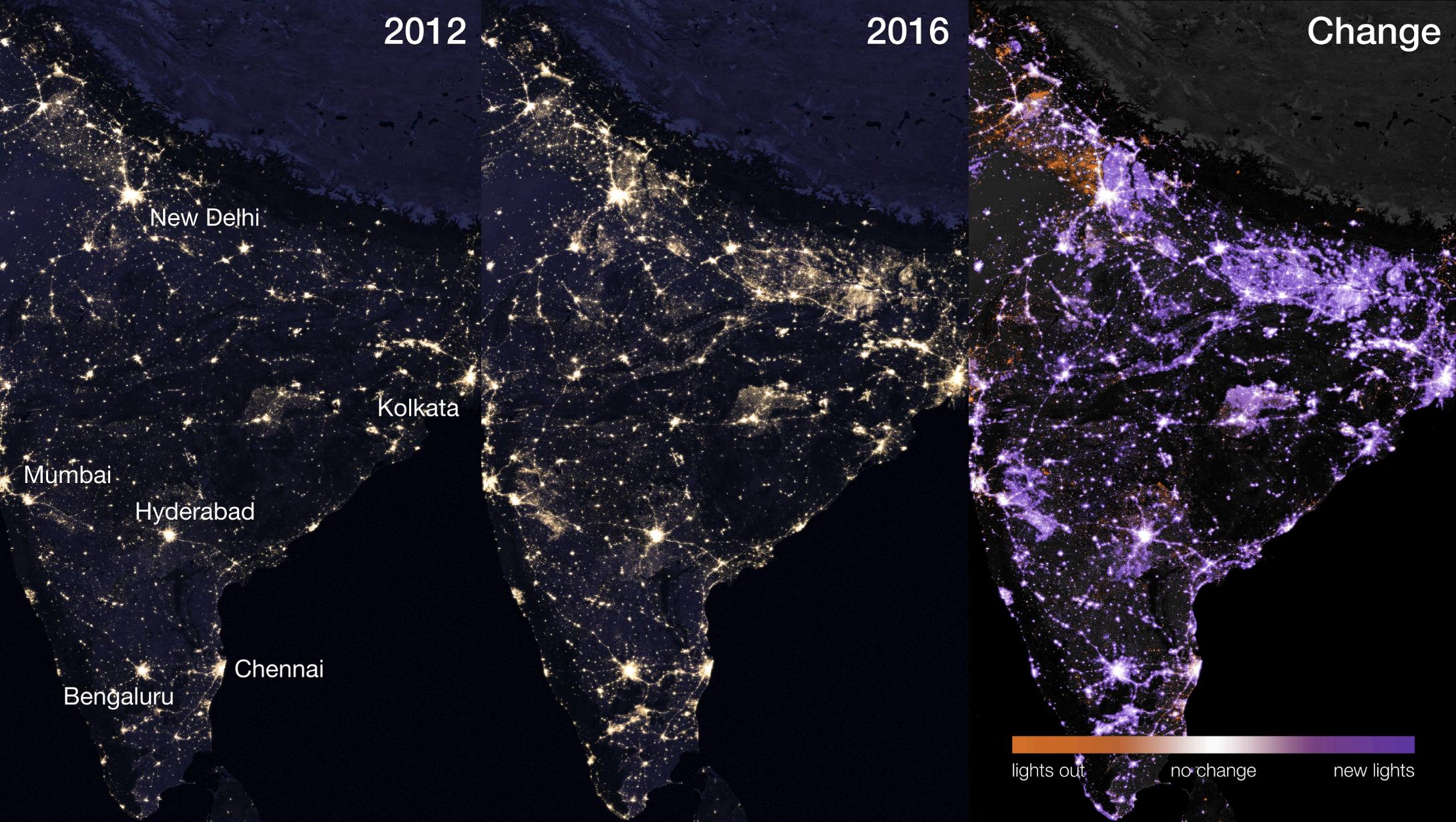
Light pollution May/June 2024 11 Twitter: @sll100
NASA
� Released in 2020, these images show the rapid electrification of India’s rural settlements in recent years. Huge swathes of northern India, relatively dark in 2012 night shots, are lit up in NASA’s Black Marble imagery from 2016
citizens, I joined DarkSky International as a DarkSky Advocate.
The effort to mitigate light pollution at a macro level (in a community, a city, or a country) must begin at the micro level (on one's own doorstep). I adopted grassroots advocacy as a lifestyle by talking to that person right next to me, arranging short sessions with universities and among lighting communities, giving them insights into the issue.
Several ordinances and norms related to light pollution mitigation exist, but there are discrepancies in the language, technical aspects and implementation levels. This lack of common ground adversely affects the goal of implementing responsible outdoor lighting. Also, the norms don't elaborate on the scientific reasons behind each strategy, and this reasoning is essential for informed decisions.
As part of my dissertation at Heriot-Watt University, I focused on shedding light on the myths related to overlighting spaces. It involved unifying the guidelines related to skyglow to understand the permissible lighting thresholds in a neighbourhood and give ordinary people the tools to interpret good lighting design.
An Indian firm called AstronEra, established by Shweta Kulkarni, incubated by the Indian Institute of Management, Bangalore, organised the International Dark Sky Preservation and Astro Tourism Conference (IDSPAC 23) in Manali, a Himalayan resort town, in November 2023. This was done with the support of the Ministry of Science and Technology of India. At the conference, government officials, industry leaders, students and researchers came together to start discussions and develop solutions to preserve dark skies in India.
Delegates looked at the underlying issues related to obtrusive lighting, scientific reasoning and impacts, and possible solutions were presented and discussed. Urban lighting was identified as one of the key pollutants, and a consensus agreement was reached, first to create a more centric and focused discussion with the key decision makers in the country, to hold campaigns and conferences at a national level to raise awareness about light pollution, and to categorise light pollution as one of the pollutants.
This mission is not just to attract
stargazers and astronomy enthusiasts, but to preserve natural darkness and to place the nation as a prime destination for eco-tourism. This would provide economic opportunities for local communities, thereby reducing the impacts of climate change.
With a vision of a future where the beauty of the night sky remains unobscured, and the detrimental impacts of light pollution are mitigated, the conference will be named AstronEra's Dark Sky Policy and Conservation Symposium (ADSPACS24).
The symposium will serve as a vital platform for policymakers, industry leaders, researchers and advocates to convene and tackle the multifaceted challenges of light pollution. While AstronEra is bringing together policymakers and other stakeholders, my role as a member of the SLL is to help link together the lighting industry and join hands in this mission.
India being vast and diverse, the initial step to mitigate light pollution will be executed in three phases in the coming years through conferences that bring together government officials, industry stakeholders and conservation advocates.
Phase I will be an online symposium, held in May. It will focus on and pinpoint the major issues, and also start discussions with the government authorities about introducing sustainable and innovative solutions for urban and suburban areas.
Phase II will be held in Maharashtra, a state in the western peninsula of India, by December, as an in-person conference with the aim of identifying the issues and focusing on coming up with sustainable solutions for rural areas. It will bring together stakeholders and lighting community on a single platform. The conference will also summarise the understanding of issues and present the solutions and discussions achieved so far, drafting possible policies and initiatives.
'This mission is to preserve natural darkness and to place the nation as a prime destination for eco-tourism'
Phase III will be held in Ladakh, an eastern part of larger Kashmir, as the region plays a very pivotal role as the home of India's first Dark Sky Reserve at Hanle. During the conference the region will serve as a case study as it has a rich history of astronomical observations dating back centuries, with traditional knowledge systems integrating celestial phenomena into religious and cultural practices. Institutions such as the Indian
Astronomical Observatory (IAO) at Hanle and the Indian Institute of Astrophysics (IIA) have established observatories in Ladakh to leverage its favourable astronomical conditions.
At the heart of ADSPACS24 lie several key objectives:
1 Raising awareness to underscore the importance of dark sky preservation for scientific research, cultural and ecological balance.
2 Facilitating policy development by providing a forum for policymakers to engage in robust discussions, and formulate policy frameworks and regulatory measures by fostering collaboration between government, industry and conservation advocates.
3 To showcase diverse conservation strategies from community-led initiatives to technological innovations. It will offer a platform to share the best practices and innovative solutions for conserving dark skies and minimising the adverse impacts of light pollution.
4 Provide a technological innovation platform to showcase cutting-edge solutions and smart lighting systems.
5 Presenting sustainable lighting solutions and best practices focusing on the ideal selection of luminaires from a design perspective, and the easy interpretation of lighting designs from a stakeholder's perspective to identify responsible lighting.
6 Creating networking and partnership opportunities between policymakers, industry stakeholders and conservation advocates.
7 Analysingglobalcasestudiesandsuccessstories.
The need of the hour is to impart knowledge and guidance to ordinary people, in analysing outdoor lighting, implementing feasible and practical changes, and making the environment a safe place both for humanity and the ecosystem. By bringing together government officials and the lighting industry, we hopefully can harness the power of collaboration to address one of the most pressing environmental challenges of our time.
Following the ROLAN (Responsible Outdoor Lighting at Night) Conference in 2022, the SLL and other founding partners published the ROLAN Manifesto in support of UN Sustainable Development Goals. The document is available at: www.cibse.org/policy-insight/news/ responsible-outdoor-lighting-at-night-rolanmanifesto-for-lighting-professionals
Light pollution May/June 2024 12 sll.org.uk
THE CARBON-BASED LIGHT FORM
A newly updated report on the use of graphene in lighting assesses its current potential
As with a number of alternative technologies that may or may not find their way into the lighting mainstream, graphene has occasionally produced a flurry of excitement, only for things subsequently to go very quiet. In 2015, for example, the University of Manchester (see box) announced it was producing a graphene light bulb, 'expected to perform significantly better and last longer than traditional LED bulbs', with lower energy emissions, greater longevity and lower manufacturing costs.
Behind it was Graphene Lighting, a spin-out formed by graphene producer BGT materials based on a strategic partnership with the National Graphene Institute (NGI) atthe University of Manchesterto create graphene applications.
Strictly speaking, it was still an LED source, the role of the graphene effectively being as a heatsink.
Some nine years later, a possible merger with Chinese company JTX having fallen through, the company set up its own manufacturing facility in China. According to the Nanotechnology Products Database, it is producing the Graphene Lighting LED SUN A60-8W Curved Filament Bulb with a patented curved filament.
As the report, Graphene for the Display and Lighting Industries, points out, graphene can be used for several applications in the lighting industry: 'graphene’s heat and electric conductivity, coupled with its transparency and flexibility makes it an ideal material for lighting devices.' Its use as an efficient small heatsink built next to the LED chip, has been a key application for research.
The report documents various activities in the field, particularly in China and Taiwan. In September 2017, for example, China-based Tongshu Optroelectronic Technology announced a new range of graphene-enhanced (heat-dissipating) LEDs, said to be 75 per cent smaller, 30 per cent lighter and saving around 20-30 per cent of the power compared to the company’s regular LEDs. Tongshu claimed to have installed 200,000 graphene-enhanced LEDs in Beijing and in
the Zheziang and Hainan provinces in China.
Aside from heat dissipation, there are other applications highlighted by the report. Graphene can also be used as the transparent electrode for both OLED and LED devices. In 2019 researchers from Norway demonstrated the use of graphene as both a growth substrate and transparent conductive electrode for an ultraviolet light-emitting diode. Its potential where OLEDs are concerned lies in it replacing ITO (indium tin oxide), fragile and expensive, as the transparent electrode material in the lighting panels.
Graphene has also been shown to be a very efficient material for quantum dots (semiconductor nanocrystals). QDs can be used to enhance the efficiency of lighting devices (using the photoluminescence property of the QD) and also (using the electroluminescence property of the QD) to create an actual QD emitting device.
The report cites Japan-based material developer Green Science Alliance which in March 2021 announced that it had developed a new composite material made from a combination of graphene quantum dots and silica, which could be useful for creating white LEDs from blue LEDs (440-470 nm). According to the company this is the first adoption of such a material for LED applications, and offers superior performance compared to the currently used phosphor as the QDs do not suffer from light scattering, and the white LED is more efficient. The material is also said to be inexpensive – in fact GS Alliance believes the new white LED will be cheaper than current white LEDs on the market.
However, researchers and developers are still trying to find ways to mass produce graphenebased QDs, says the report, and as far as is known there is no commercial activity towards GQDbased applications.
Graphene cannot be used as a light-emitting material itself as such, but modified graphene or graphene-based structures can be used to create light-emitting devices. Over the past decade, researchers at the University of Manchester, Korea and the US, and Goethe University in Germany among others have explored different approaches. In 2015, for example, researchers from Tsinghua University in Beijing demonstrated a graphene-based LED that can be tuned to emit different colours of light across nearly the entire visible spectrum, something that hasn’t been achieved before.

Direct that could probably apply to a number of the potential alternative technologies that have emerged in the past 20 years or so:
'The biggest hurdle to overcome is scaling graphene production on an industrial level. The complication of producing it in large quantities means that it is still very expensive. As with all technologies – including LED lighting – it is only a matter of time before the production of graphene becomes more efficient and cost-effective.
‘When that happens, it will disrupt industries around the world.'
Graphene for the Display and Lighting Industries (Edition March 2024) by Roni Peleg and Ron Mertens is available from www.graphene-info.com
What is graphene?
Graphene is a modified version of carbon. Made up of a single layer of carbon atoms arranged in a chicken wire pattern, it is one million times thinner than a human hair, and 200 times stronger than steel. It is also the best conductor of electricity and heat known to humankind. It is light, durable and almost transparent and has a number of applications, particularly in electronics, energy storage and photovoltaics.
It comes at a relatively high price but, depending on improvements to current production methods, it should be cheap as it is only made of naturally abundant carbon atoms.
It may enable advances such as bendable and transparent computer screens, cheaply desalinated water using graphene membranes, low-cost and efficient solar panels, lightning-fast microcomputers, light and powerful batteries that charge within minutes, unique sensors, and much more.
Graphene was isolated at the University of Manchester in 2004 by SirAndre Geim and Sir Kostya Novoselov, earning them the Nobel prize for Physics in 2010.
A last word from online lamp supplier Lightbulbs
Technology May/June 2024 13 Twitter: @sll100
CAUSE AND EFFECT
IainCarlilesinglesoutafurtherthreeofthepapersfrom therecentlypublishedspecialearlycareerresearchedition ofLightingResearchandTechnology
On the subject of urban lighting, Jedon et al observe how the majority of lighting research looks at the impact of street lighting on the visual tasks of pedestrians, and pedestrians’ feeling of safety, focusing on visual performance and people’s appraisals of the outdoor environment after dark.
They note that other important factors such as the influence of alertness and attentiveness of pedestrians is not yet well researched.
The paper therefore provides a clarification of relevant constructs (alertness, arousal and anxiety) in order to propose a new urban lighting framework. A case is made for research into the mechanisms underlying pedestrians’ attention and safety, noting that a focus on arousal could be a promising avenue for future research since it could be stimulated through many properties of the external environment, not just lighting.
Gkaintatzi-Masouti et al have undertaken a literature review investigating how light affects human physiology through the non-image-forming (NIF) pathway, considering various luminous and temporal factors. Fifty-five journal and conference
papers were systematically reviewed, showing that while an interest in the NIF effects of light on people is increasing, there is no common methodology to perform simulations.
Gaps were identified in current research, suggesting further investigations should be made into how people change their view direction and move within spaces. This would provide more reliable input for simulations, and further investigate how light affects the range of biological responses.
C Yu et al’s paper investigates the factors that influence the effective light within a space, describing effective light as the actual light within a space, 'a complex light field, resulting from a mixture of emissive light sources and indirect mutual surface (inter-)reflections'. In other words, how the light received at the eye will potentially have changed from that emitted by the light source.
An investigation was made into the colourimetric properties of the light, considering both the correlated colour temperature (CCT) and colour rendition, for spaces of one reflectance type. Simulated and physical measurements of

spectra were made of both the light density (diffuse-light field component) and the light vector (directional light-field component), employing white-light sources.
From the study it was found that there were significant differences between the light sources’ specified CCT and colour rendition, and the resultant properties of the light. Interreflections of light predominantly affected the CCT and colour rendition of the light density relative to the light vector. As a result, the authors propose the use of Lambertian spheres as three-dimensional colour checkers to assist designers in better understanding the interactions between the light source and the scene.
Iain Carlile, FSLL, is a past president of the SLL and a senior associate at dpa lighting consultants
The special edition of Lighting Research & Technology (LR&T Vol. 55 no.7-8), showcasing the work of early career researchers in lighting, was published towards the end of 2023. All of the lead authors were PhD candidates at the time of submission of their papers
Lighting Research and Technology: OnlineFirst
In advance of being published in the print version of Lighting Research and Technology (LR&T), all papers accepted for publishing are available online. SLL members can gain access to these papers via the SLL website (www.sll.org.uk)
Proposing a research framework for urban lighting: The alertness, arousal and anxiety triad
R Jedon,AHaans and Y de Kort
Simulations of non-imageforming effects of light in building design: A literature review
M Gkaintatzi-Masouti, J van Duijnhoven and MPJAarts
Effects of inter-reflections on the correlated colour temperature and colour rendition of the light field
C Yu, M Wijntjes, E Eisemann and S Pont
LR&T essentials May/June 2024 14 sll.org.uk
� 2D vs 3D colour checkers (Effects of inter-reflections on the correlated colour temperature and colour rendition of the light field, C Yu et al)
EYE TO THE FUTURE
Iain Macrae on five things that will change lighting design
Throughout my career I have always tried to have an eye to the future: to identify the things that will change the market, the technology or the application of light. Perhaps inevitably the following is a rough, and probably flawed, look at what will be the big challenges in lighting design over the next few decades. Some might appear obvious, but I wonder if everyone has really thought deeply about their implications for their career or business.
Iain Macrae, CEng FSLL MCIBSE, is a past president of the SLL, chair of SLL LG5: Lighting for Education, and member of British and European standards panels. He is currently a consultant and educator, and founder of the training company Light Unwrapped

Artificial intelligence
While my experience of AI suggests it is currently way overrated, it is setting us on a path where it will be used to complete repetitive tasks. I already use software to place luminaires in a room and to see the results. The design rules I apply to achieve this are not difficult, though the balance of the play of light in a room can be. AI is perfectly placed to solve complex problems like this, using iterative techniques to select the ideal luminaire specification.
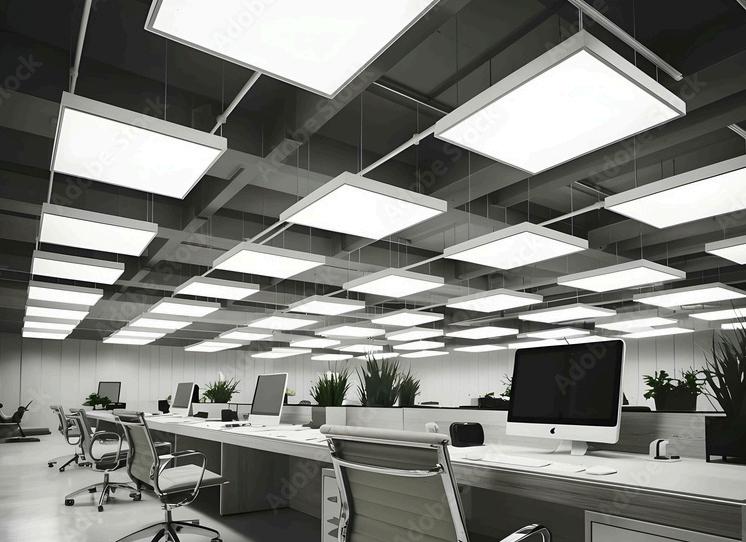
Climate change
The obvious elephant in the room. Lighting in cities alone accounts for more than 19 per cent of the world’s energy use. Yes, we all know that energy is not the only key consideration in lighting, but we should accept that climate change is a challenge and that lighters will have to play a part in the solution. An endless array of downlights creating 500 lux, wall to wall, should have already had its day, yet the vast majority of schemes demonstrably still disregard the fact and repeat this design mistake.
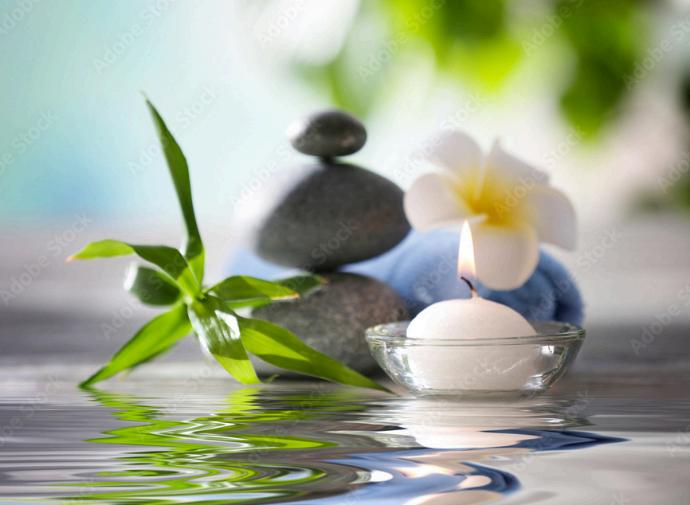
Health
Lighting for health and wellbeing, a phrase that has increasingly gained currency in recent years, is important – and a great marketing story – but designers need to be wary. As we discover more about the impact of spectrum, intensity and duration of light on human health, that same light has health impacts if you get it wrong. Perhaps we don’t know the severity of these impacts but I wonder if PI cover will see a hike in prices as insurers foresee increasing risks.

Circularity
The buzzword has to become reality. We will simply not have the resources to continue given the current standard of living in the leading nations. The challenge is to change the market mindset away from simple cost towards elements of great design that also include sustainability. That means designers specifying circular products and it means manufacturers changing business model from mass manufacture, to recycle and reuse. Failing to do this will increase the gap between rich and poor nations – only this time the currency will be light.

Augmented reality
In a drunken marketing meeting some years back a colleague asked me what would change lighting for ever. I pointed to Mercedes' sensor-based pedestrian detection, imaged on to a heads-up display. If you have this, I said, there is less need for headlights as sensors can scan the road ahead. Imagine taking that technology with us, mounted on glasses and, like Geordi La Forge in Star Trek, augmenting light into a room rather than lighting the room itself. Could it be the end of real luminaires?
Top five May/June 2024 15 Twitter: @sll100
1 4 5 3 2
All images courtesy of Adobe Stock
Events 2024
For details of all upcoming webinars, go to: www.cibse.org/societyof-light-and-lighting-sll/sll-events/upcoming-webinars-and-onlinecontent
For previously recorded CPD webinars (including regional webinars), go to: https://www.cibse.org/get-involved/societies/society-of-lightand-lighting-sll/sll-events/on-demand-webinars-past-presentations
ONLINE EVENTS
SLL #GROWYOURKNOWLEDGE
8 May LG7: Offices, Sophie Parry
15 May LG14: Control of Electric Lighting, Sophie Parry
22 May LG4: Sports Lighting, Mike Simpson www.cibse.org/knowledge-research/knowledge-resources/ growyourknowledge-webinars
EVENTS
NET ZERO LIGHTING CONFERENCE
(Organised by the LIA and Recolight)
Date: 2 May
Venue: 15Hatfields Conference Centre, London SE1 www.thelia.org.uk/page/NetZeroConference
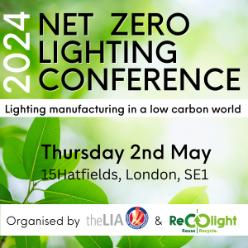
SLL AGM, AWARDS AND PRESIDENT'S ADDRESS
Date: 14 May
Venue: Leeds Art Gallery sll@cibse.org
DESIGN LONDON
Date: 21-23 May
Location: Clerkenwell, London www.designlondon.co.uk
IALD ENLIGHTEN EUROPE 24
Date: 21-22 June
Venue: 155 Bishopsgate, London EC2 www.iald.org
CIRCULAR LIGHTING LIVE 2024
(Organised by Recolight)
Date: 9 October
Location: Royal College of Physicians, London NW1
www.circularlighting.live
READY STEADY LIGHT 24

(in association with Rose Bruford College and the IALD)
Date: 15 October
Venue: Rose Bruford College, Sidcup, Kent www.sll@cibse.org
LIGHT2PERFORM 24
Date: 13-14 November
Venue: ExCeL, London www.build2perform.co.uk/light2perform

16


































